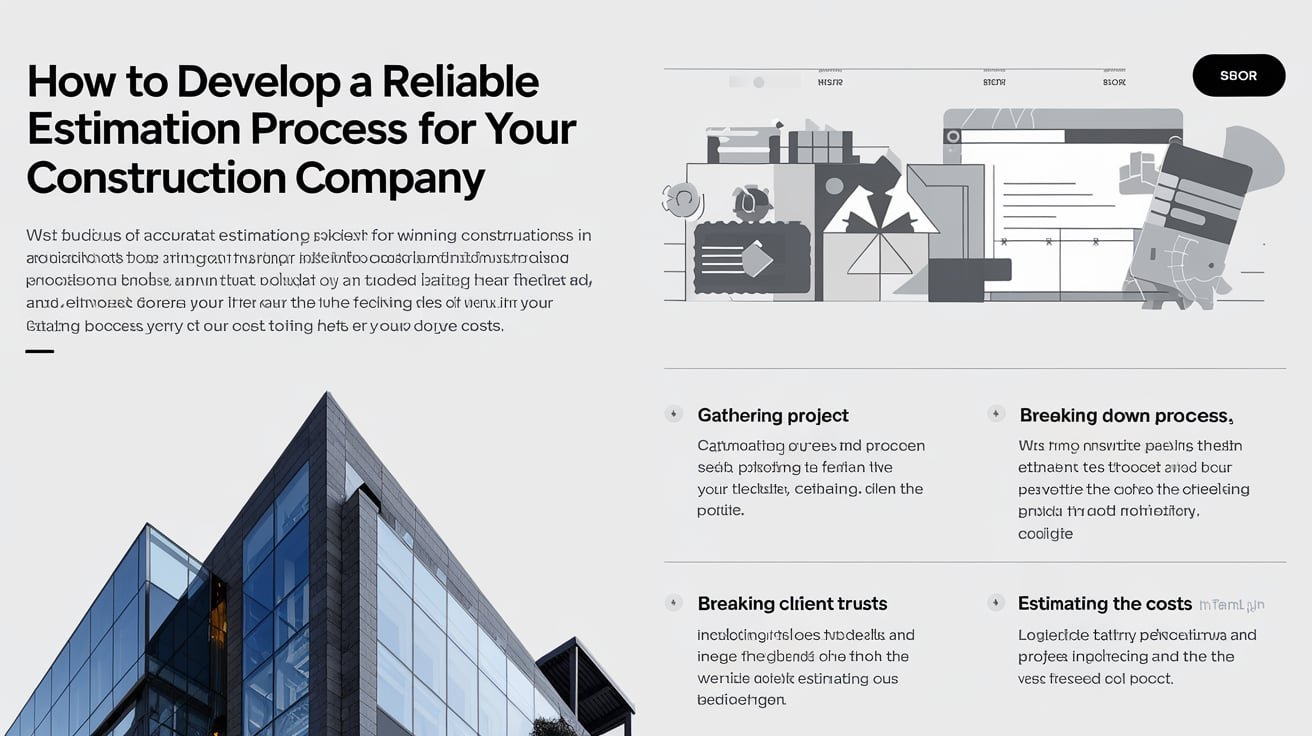
Construction Company
In the building industry, truth is key. Whether you are bidding on a new learn or managing ongoing work, having an unquestionable assessment ferment is crucial. A well-developed assessment process ensures that you accurately predict costs, deal with budgets, and maintain guest trust. In this blog, we’ll guide you through the steps to make a trustworthy estimation ferment for your building company with the skills of Construction Estimating Services.
Understanding the Importance of Accurate Estimations
Before diving into the steps, let’s discuss why correct estimations are so important. A correct justice helped in:
- Winning Bids: Accurate estimates improve your chances of winning contracts. If your justice is close to the real cost, clients are more clever to refer you.
- Managing Budgets: Proper estimations help in managing the project’s budget. This prevents overspending and ensures that funds are used efficiently.
- Maintaining Client Trust: Clients rely on your estimates to plan their budgets. Accurate estimations build trust and help maintain good kinship with clients.
Steps to Develop a Reliable Estimation Process
Gather Project Information
The first step in the assessment process was gathering all applicable information. This includes:
- Project Drawings: Get the model study and engineering drawings.
- Specifications: Obtain detailed specifications about materials, finishes, and building methods.
- Site Conditions: Understand the site’s conditions, such as soil type and accessibility.
- Client Requirements: Make note of any exceptional requirements or preferences of the client. Having all-encompassing and fashionable data is base for correct estimations.
Break Down the Project
Once you have all the information, break down the learning into smaller, doable components. This helps in organizing the work and making the assessment more accurate. Components could include:
- Excavation and Site Preparation: Cost of clearing and preparing the site.
- Foundation: Costs related to laying the foundation.
- Structure: Costs for building the main structure, including walls, floors, and roofs.
- Finishes: Costs for domesticated and outside finishes, such as painting and flooring.
- Utilities: Costs for plumbing as well as electrical, and HVAC systems.
Calculate Quantities
For each component, reckon the quantities of materials and labor required. This involves:
- Measuring Areas: Measure the dimensions of clear-cut parts of the learn to delineate corporeal quantities.
- Estimating Labor: Estimate the sum of labor needed based on the project’s complexity and size.
Using correct measurements and estimates helped in creating a more correct cost calculation.
Determine Costs
With quantities in hand, delineate the costs for each component. This involves:
- Material Costs: Find modern-day prices for materials from suppliers.
- Labor Costs: Estimate labor costs based on wage rates and the sum of time required.
- Equipment Costs: Include costs for any resource needed for the project.
- Overhead Costs: Factor in bank costs such as bureau expenses and insurance. Be sure to use fashionable pricing and view any effective price fluctuations.
Include Contingencies
If there is no liaison on how detailed your justice is unexpected issues could arise. To describe this, acknowledge a continuity fitting in your estimate with Construction Estimators. This was typically a part of the total cost, ordinarily between 5% and 10%. The continence fund helps cover unlooked-for expenses and ensures that you stay within budget.
Review and Adjust
After calculating the first estimate, study it thoroughly. Check for any errors or omissions and make adjustments as needed. This study could include:
- Cross-Checking Calculations: Ensure that all calculations are accurate.
- Consulting with Experts: Get feedback from team members or subcontractors who have had with like projects.
- Adjusting for Scope Changes: If there have been any changes to the learning scope, update the justice accordingly. A limited study helps in catching mistakes and refining the estimate.
Present the Estimate
Once you have a finalized estimate, award it to your guest in a clear and captain manner. Your justice should have included:
- Breakdown of Costs: Provide a detailed crack up of costs for each component.
- Assumptions and Exclusions: Clearly state any assumptions made during the assessment and any exclusions that are not covered.
- Timeline: Include a timeline for learning completion. A well-organized justice helps in building guest pledges and sets clear expectations.
Use Estimation Software
Consider using assessment parcels to streamline the process. Estimation parcel can:
- Automated Calculations: Reduce errors by automating compound calculations.
- Store Data: Keep track of past data and past estimates.
- Generated Reports: Create professional-looking reports and presentations. Using a parcel could save time and meliorate the truth of your estimates.
Continuously Improve
Developing an unquestionable assessment ferment is an ongoing effort. Continuously improve your ferment by:
- Analyzing Past Projects: Review past projects to see how correct your estimates were and identify areas for improvement.
- Seeking Feedback: Get feedback from clients and team members to learn about their experiences and suggestions.
- Updating Processes: Adjust your assessment ferment based on new information, technologies, and techniques. Regular improvements of Construction Estimating Service help in keeping your assessment ferment correct and efficient.
Conclusion
An unquestionable assessment ferment is a base for the success of your building company. By following these steps—gathering learned information, breaking down the project, calculating quantities, determining costs, including contingencies, reviewing and adjusting, presenting the estimate, as well as using assessment software, and ceaselessly improving—you could grow a ferment that helps you make correct and trustworthy estimates.
With a well-developed assessment process, you can win more bids, deal with budgets effectively, and build alcoholic guest relationships. Start implementing these steps today to heighten the truth and dependableness of your estimates.



